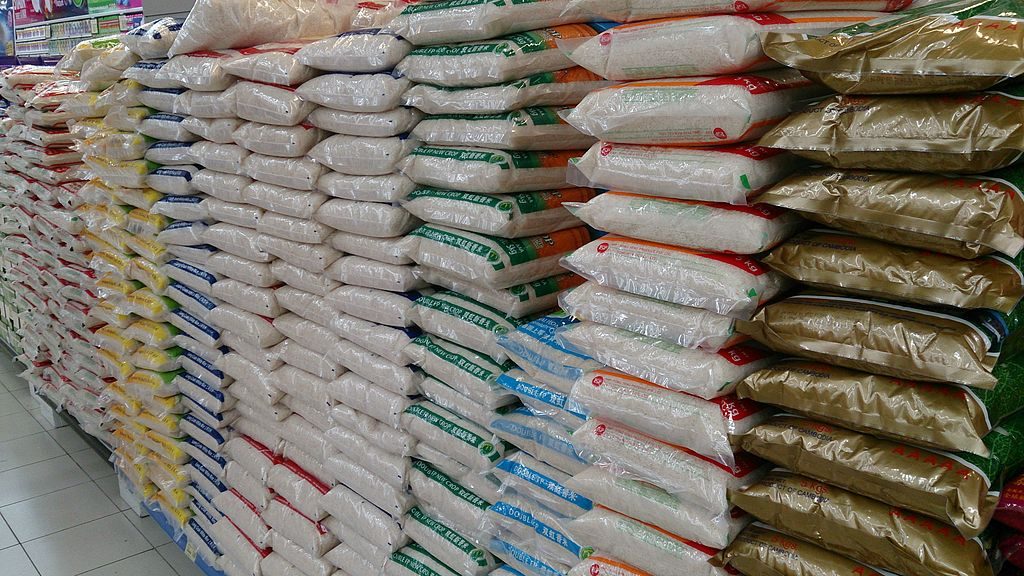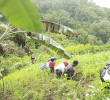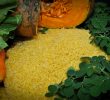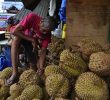
DAVAO CITY, Philippines – Surviving with just an income of Php 250, which is lower than the minimum daily wage in the city, pedicab driver Manuel Abasquez, 47 years old, is trying his best to budget his earnings to feed his family of six.
“Sa karon kay naa pay mapalit nga bara-barato sa singkwenta murag kaya-kaya pa nga makapalit og sobrang duha ka kilo pero bisan karon, kontrol na gamay ang kaon namo (For now we can still buy something for fifty pesos, we can still buy two kilos of rice, we just need to control how much we eat),” he told Davao Today.
The retail price of various types of well-milled rice at Bankerohan Public Market is currently pegged at Php 48 to Php 58 per kilo. Last week, the prices were between Php 44 to Php 50 per kilo.
Abasquez spends most of his daily income on food and other necessities just like many earners in the city’s informal sector. But with the increasing prices of basic commodities like rice, vegetables, fish, and meat, his family must make adjustments to get by.
His Php 250 income is 56% less than the minimum wage rate of Php 443 (for the non-agriculture sector) in the Davao Region. He still has monthly bills to pay and needs to save money for the education of his three children.
Soaring prices of food and commodities such as fuel have been constant under the Marcos Jr. administration.
There is the much-hyped campaign promise by President Ferdinand Marcos Jr that he will bring the price of rice down to Php 20 per kilo.
During his State of the Nation Address past month, he assured that prices of food will be stable and Kadiwa stores all over the country will ensure affordable agricultural products. But none of these are visible in Davao City.
This leaves the local government to find answers to the soaring prices.
But the Davao City Agriculturist Office (CAO), in a recent press conference, said Davao City does not have sufficient rice production to sustain its population of 1.5 million. CAO officer-in-charge Edgardo Haspe.
The city has only 600 hectares of irrigated rice fields in the districts of Calinan, Baguio, Marilog, and a portion of Buhangin.
Its harvest can only supply from 10 to 14 days (Davao Today estimates Davao City rice farms can produce 36,000 sacks in three months) compared to the demand of 10,000 sacks per day.
To meet the public’s demand, Davao City relies on its neighboring provinces like Davao del Sur, Davao de Oro, North Cotabato, and on importation. But given the law on demand and supply, prices are expected to soar, says Haspe.
Haspe has urged upland rice farmers, whose rice production is only intended for personal consumption, to sell a portion of their harvests to reduce the amount of supply coming from outside Davao City.
“Kung wala nay bugas musulod sa Davao City murag luoy ang Davao City, in fact karon isa sa among plano katong mga IP farmers isupport nato para sa upland rice nato kay atong irrigated rice gamay na jud kayo )If there will be no more rice coming to Davao City, we would be pitiful. In fact our plan now is to support indigenous farmers in their upland rice crops, because irrigated rice is not sufficient),” he said.
But the farmer-scientist group Masipag Mindanao believes it is high time for the city government and the Department of Agriculture to reassess the rice program implementation and its priorities as rice production has high demand for local consumption.
“Kana gyud ang dako natong concern, while naa may efforts ang City Agri and DA (Department of Agriculture) pero need gyud ireview ang effectivity ani na mga projects and if naga-address ba ni sa atong problem na shortage ng rice, (That’s the biggest concern, while there are efforts from the City Agri and DA, there is a need to review the effectivity of these projects if it addresses the problems of rice shortage),” said Leo XL Fuentes, Masipag Mindanao’s regional coordinator.
Fuentes added the local government and DA “should not expand plantations for export crops” but should prioritize rice production as a staple crop.
“Historically ang Davao especially iyang highland areas kay bountiful gyud ug upland rice,pero syempre kadtong gicommercialize na ang GMO na corn na herbicide tolerant paspas gipapha ang upland rice nato, (Historically, Davao, especially the high-and areas are bountiful with upland rice, but when commercialized crops came such as GM- corn that are herbicide tolerant, it wiped out the upland rice)” he added.
Meanwhile, Councilor Marissa Abella, head of the Committee on Agriculture in the city council told Davao Today that she is planning to write the office of the city mayor to follow up on the creation of the technical working group (TWG) to conduct a study for rice production and include the finding a place for the proposed rice processing facility that could help increase the supply for local consumption. (davaotoday.com)
davao city, rice prices









